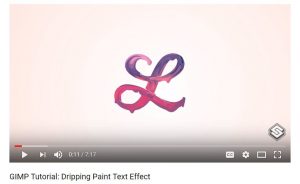Parent Communication
If I had to name one thing that I could do a lot better at, it would be communicating with parents. I don’t communicate with parents very often but I have been working on increasing that and I have a new idea of what I will do this summer to increase it even more.
Good Calls (or emails) Home
I put an event in my calendar to remind me to send a good email home to the parents of one student from each of my classes every Friday afternoon. Good notes home is something that I used to do a lot in the Face-To-Face classroom. I was in the art room so often times the students that were doing really well in my class were not doing so great in their other classes. So, I always tried to send good notes home to parents that probably don’t get these types of notes very often. Now I look for students that have done well on recent tests or assignments, or students that have recently started turning in a lot of assignments and getting caught up in the class.
Remind
This summer I am going to give Remind a try. I set up Remind pages for my summer classes and created an infographic that explains what Remind is, why they should join, and how to register for our class. Below is what it will look like!

*You can click on the image to see it bigger
I hope that with these positive emails home and the use of Remind I can have a more productive relationship with the parents of my students! And I think that this will also make communicating with students and mentors easier as well!
Teachers need to talk to other teachers for lots of reasons, to learn, grown, vent, work together, etc… This can be a bit difficult when you work from home and don’t see other teachers in the break room during lunch. But, that is what a Personal Learning Network (PLN) is for!
I have 3 major PLNs that I go to for support and inspiration.
First, I have the iEducator Facebook Group. This group has 6 members total so everyone contributes a lot. Because we all teach different subjects, this group is mostly for inspiration and technical support. We all share on this group awesome things that our students do that inspired us. When one of my students does something awesome I want to share it with this group because I am proud of them. I also like to look at the things my fellow iEducators post for inspiration when I need it. We also ask each other questions about important dates, share information about upcoming events, and lots of other stuff.
Second, I belong to a Facebook group called Technology in the Art Room. This group is AWESOME. I would say that about half of my time on this group’s page is spent posting/commenting and the other half I am just reading over other people’s posts. I really like this group because it is subject specific and technology specific. People share fun projects that they do with technology in their classes so I find this extremely relevant to what I do on a daily basis. I also post a lot of tips in this group. I shared with everyone about getting Google Certified, how I use Padlets in my classes, and a new podcast I found about using Google in the Classroom.
And lastly, I joined the Art Teachers Facebook group while I was in college and wanting to gather ideas for when I became a teacher. While some of it is still relevant, mostly it has to do with projects and tools that can really only be used in the face-to-face classroom. Plus a lot of teachers in the group teach elementary school. I mostly use this group for inspiration rather than specific help.

Overall, these 3 groups are amazing to be a part of! I typically look at them after work each day for a bit and sometimes I save posts or take notes from them to implement the next day or revisit later. I like contributing to these groups, especially the Technology in the Art Room group because on there are a lot of teachers that are new to using technology for art and I feel like I can contribute a lot to that discussion. At first I missed chatting with the other teachers at lunch but these PLNs make up for a lot of that, especially the iEducator group where I am writing directly to my awesome coworkers!
Reflection is something very important for everyone to do, especially teachers. Two major ways that I reflect, learn, and grow are through personal reflection (blogging and note taking) and going through the notes on the observations done by my supervisor.
Personal Reflection: I reflect personally by taking notes on things happening in my classes and using them to better serve my students later. I write about certain assignments that I need to clarify the directions of, what I should ask students about in the future, what I am doing really well with, and what I think that I need to improve on.
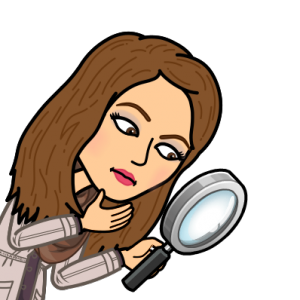
Observations: I absolutely love getting my observations back from my supervisor. Even though I do reflect on my work personally, I think that it is much better to get reflections from a fresh set of eyes. Sometimes things are pointed out to me that I never even thought of, but will greatly improve my student’s class experience. And the biggest thing that I am working on is getting students to think deeper in classroom discussions. I was given this amazing resource on what kinds of questions to ask my students in discussions to get them to think deeper about the prompt and their answer to it. Some of them that I try to include now are: “What makes you think that _______________?”, “What are some of the causes that led to ______________?”, and “How does that compare to _____________?”
Because of the reflection given to me during observations, I can better serve my students.
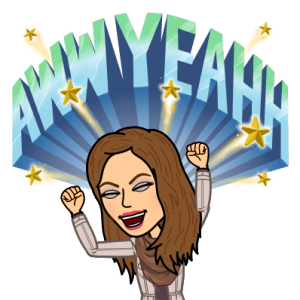
I know that Multiple Choice Tests are sometimes necessary, but I think that assessments need to go above and beyond that in order to be high-quality. Students need to be able to process the information and use it independently – not just memorize facts. And lets face it, when students are just memorizing facts they tend to forget them as soon as the test is over. For example, I spent 3 years in high school memorizing words in Spanish class and I do not remember anything from it now…
Quality Assessments get students thinking. They need to use the information they have learned along with their own skills and experiences to process that information into higher thinking answers. I am going to discuss the quality assessments that can be seen in my Art Appreciation class.

Essay Questions: From the very first test, students are asked to use the information they have learned to analyze a work of art. Meaning that they are not just listing off information they have learned from the class but they are using the strategies taught and applying them to the analysis of an actual work of art.
Hands On Activities: Throughout the class, students are asked to create art work based off of the lessons they have learned. One example of that is in the architecture unit. Students learn how architects design houses and other buildings, the symbols they use, the process they go through, and the technology they use to create digital renderings. Students use the information they have learned to draw the layout of their dream home as well as a rendering of what the front of the house would look like. Students are taking the information that they learned about the design and planning of buildings and applying it to a real project. And students really enjoy these hands on activities!

Overall, students learn more from quality assessments and teachers can more accurately see what students know and what they still need help with. Quality assessments often require higher level thinking rather than memorization, which is exactly what students need!
I may have borrowed my title from Michigan Virtual’s awesome presence at MACUL, but it really describes how I feel about the conference! I learned SO many amazing things there that I am implementing in my classes now. I came out of that experience refreshed and inspired to continue to help all of my students learn! Here are some of the things I am doing post-MACUL/Spring Synergy!
Twitter
I went to an awesome session about using twitter in the classroom (thanks @jasonaxelbowman) and I was inspired to start using class hashtags to share additional information with my students. I invited them to follow me on twitter and use the class hashtag to share class related material or exciting (school appropriate) news they would like to share! Here is the info:
- @Ms_LGraham
- #MVArchaeology
- #MVArtApp
- #MVFilmStudy
Getting to know my students more
I am now sending out at least 5 messages per class a day just asking students how they are doing and asking if they need help with anything. I am hoping this will open up even more conversations between my students and me.
I was also inspired to do a padlet that is personal, fun, and class related! I know, how did I do that all in one thing??? Well for my film studies classes I asked students to share a “Memorable Movie Moment” from their favorite film. Side note – I also discovered that you can set your padlet so that you have to approve all posts before they show up, which was necessary for this one since I had students including video clips. This is a super amazing feature that I did not know before this conference!
Changing the way I give feedback
I was inspired by a presentation at Spring Synergy to prioritize my feedback and make sure that I am spending the most time on vital assignments (papers and formative assignments where I can help before the student strays too far from the learning goals).
Reinforcing lessons with outside material
I was completely inspired by the awesome session of a panel of teachers, Carrie Moeggenberg, Garth Trask, David Theune, Mark Wells, Mark Schlaudt, and Erik Cliff. They presented a great session called “We Thought, We Inspired, We Created” that really made me see that I was only reaching the “middle” students in my courses, I wasn’t providing enough material to challenge high performing students and I wasn’t providing enough material to scaffold learning for struggling students. They spoke a lot about “cloning yourself” as in taking videos of yourself to help reach these other group of students. I am starting to not only take videos of myself like mentioned but also using outside sources that are meant to help with differentiating material for students. The main sources I use and would recommend is Khan academy, Crash Course, and Front Row Ed. Everything in Khan Academy and Front Row Ed is completely geared toward K-12 learning, but Crash Course is not so previewing all Crash Course videos is a must!
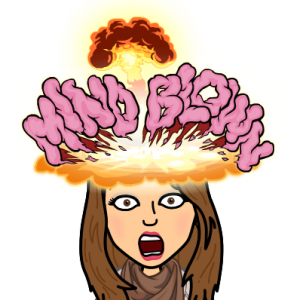
To start the conversation about mentors, I thought I would start with a funny story. At the beginning of the semester, students send me contact information for themselves and their parents, they also have to list there who their mentor is. I had one student who didn’t quite understand that mentor meant the person at his school that was supposed to help him with class-related things in person. So he wrote me this long paragraph about how amazing his dad is and how he is his mentor in life. Even though this wasn’t the answer I was looking for, it was an awesome answer!
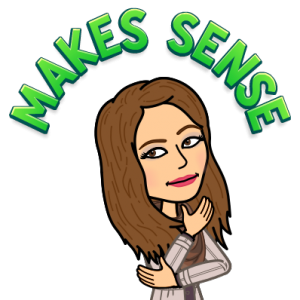
So, now for building relationships with the actual mentors that I’m going to talk about today…
The biggest thing for building relationships is communication. I think it is important to communicate clearly and as often as possible with mentors. The more I talk with mentors, the more they get to know me and are comfortable reaching out to me about their students. When I reach out to a mentor about a student that is struggling I always end the email with something along the lines of “Thank you for your help and I know that together we can help (student name) have a successful semester!” I think that a line like this helps show the mentor that I want to have a partnership with them and really work with them to find what is best for each student.
Mentor’s can be very important allies and once you get to know a few, it seems easier to manage and help struggling students.

One of the hardest things for me to deal with as a teacher is students who copy their assignments from other sources. I am not talking about missing a citation on a quote or anything small like that, I am talking about a student fully copying an entire paper/assignment from a website or another student. I recently had a student that was under a lot of stress trying to finish up the class before the end of the semester that she decided to do just that. I could tell right away that something was off because her assignment, which was supposed to be an analysis of a crime, read more like a news article; it didn’t mention criminology theories or anything else from the class. So I did a little research and I discovered an article that was exactly the same, word for word.
I knew I had to talk to her and her mentor about it, but here is the important part, she had turned in a bunch of assignments that same day that I hadn’t graded yet. When I sent her a message about the assignment she immediately replied saying how sorry she was and that she would never do it again. I then took the opportunity to do what the title of the post says, I asked her if there are any other assignments that she turned in that she wants to redo before I look at them. She took this opportunity to redo a few other assignments, realizing that this was the time to be honest and turn in quality work. I was very proud that she chose to right her own wrongs with these other assignments. To me, that said a lot more about who she was than the copied assignment that I had seen earlier.
After this conversation, we had a great teacher-student relationship. I am really glad that I was able to turn what would have been a bad mistake into a learning opportunity, for both of us.
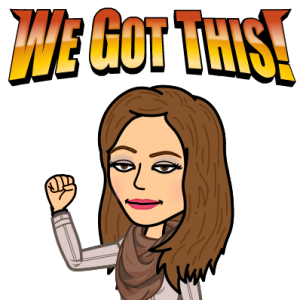
The answer to the title is, extremely important!
Effective feedback is essential to student growth and understanding. I had a student that decided to wait until the last minute to do ALL of the class assignments (I’m sure we all have a few of these) the biggest issue for me wasn’t getting all of that grading dumped on me at the last semester, it is that I had to keep making the same correction in all of his assignments. All of those lost points could have been avoided if he had read the comments and addressed the issues on his first assignment before turning in all of the others. This would have allowed him to score higher on a lot of assignments, and grading would have been a lot less of a headache for me. I think that this case specifically shows why feedback is so important. We are here to steer students in the right direction, but they need to allow us the time to do that.
In my opinion, feedback is most effective when it has a positive tone, and when it is conversation based. I like to offer my opinion on a subject (especially if it is an opinion-based discussion assignment) and then I ask them, “What do you think?” or I give them a more specific question to get them thinking about the original prompt in a more detailed manner. I think that this is an approach that allows students to come to their own conclusion about something, rather than telling them their answer is incorrect and just giving them the correct answer.
Feedback as an example:
The other role that feedback plays, besides working on actual content, is that it provides an example of appropriate constructive feedback to students that might not learn this anywhere else. For example, students can see how to respectfully disagree with someone in a place where tone can easily be construed as offensive. I think that as online educators we are not only teaching students class material, but also how to operate in the online world, which is essential seeing that our world/economy is constantly becoming more and more digitally based.
Overall, I think that effective feedback is extremely important, WHAT DO YOU THINK?
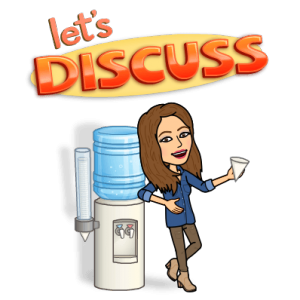
Communications: Teacher-Student, Teacher-Mentor, Teacher-Parent, and Student-Student
Out of these four categories, I selected Teacher-Student communications as my strength and Student-Student communications as my weakness. I think that I do a wonderful job of communicating with my students, not only important class information but also fun, get-to-know-each-other conversations. I think that I do a pretty good job in communicating with mentors and parents as well. But I know that my classes lack student-to-student communication. So, I am going to try and take the strategies I use to talk to my students, to get them to talk to each other.
The main strategy I use to connect with students is finding the similar interests we have. I talk to the students in the Grand Rapids area what they like to do around here (especially since I am new to the city), I talk to fellow Marvel fans about their favorite Avenger (mine is Iron Man, even though my dog’s name is Captain America), and I find other things to talk to students about as well baking, hiking, favorite books or movies, etc…). I am going to try to identify those things that students have in common with each other and get them to connect in that way. I am still figuring out a way to do this, but I am leaning towards creating a Discussion Board where students can chat about their interests with each other. I could start out by making a few posts for students to respond to, and then opening it up to allow students to create threads about their own interests (as long as it is school appropriate of course!).
I think that students getting to know each other better will help with academic discussion board responses. If they know each other then I think they will be more willing to comment back and forth about a class-relevant topic.
I will also be making more padlets where students can write back and forth to each other using comments. I think that my padlets have been very successful in the past because they are located right on the announcements page and they are attention grabbing.
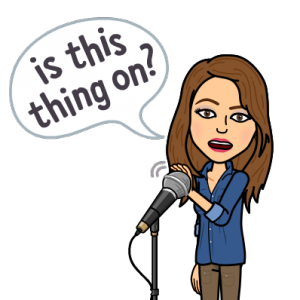
Last week’s Webinar was AMAZING! I learned so much from my colleagues at Michigan Virtual that I ended up with a huge list of things to try!
The first thing that I tried was something suggested by my fellow iEducator Lauren Nalepa. She showed that on her announcements for er Digital Imaging class (a class that I am teaching for the first time this semester) she posts GIMP tutorial videos on her weekly announcements. So that is what I did this week!
Students are at the point in the semester for this class where they are working on their individual final portfolios. Because of this, there are not lessons that students are given specific to each week anymore. And I have see quite a few portfolio assignments using text. So I wanted to show students that more could be done than just plain old text in their assignments. And so this week, I shared the video below on creating a paint dripping effect on text. I also look forward to continuing to inspire my students with a new GIMP tutorial video each week. Thank you for the inspiration, Lauren Nalepa!
*Image below is a hyperlink to the video I shared with my students this week.
